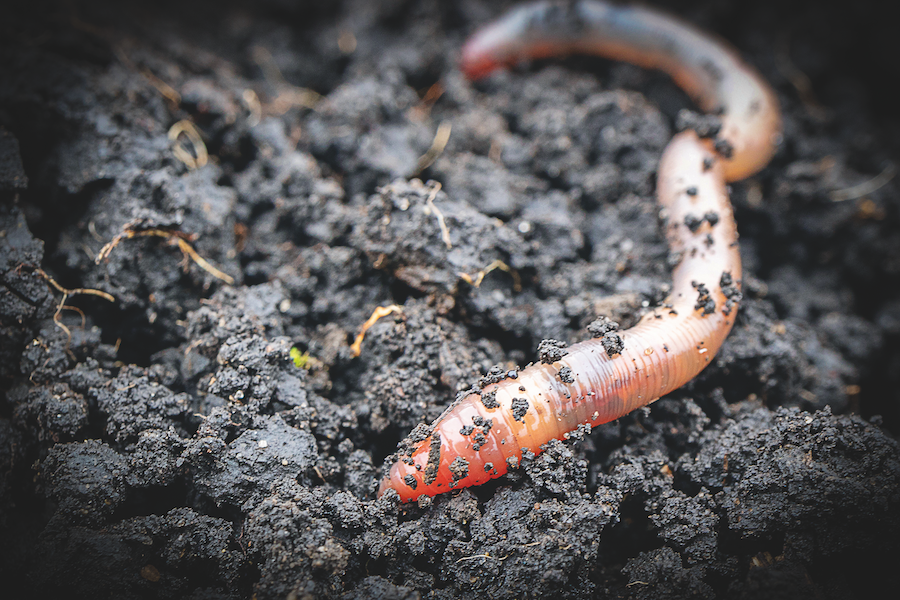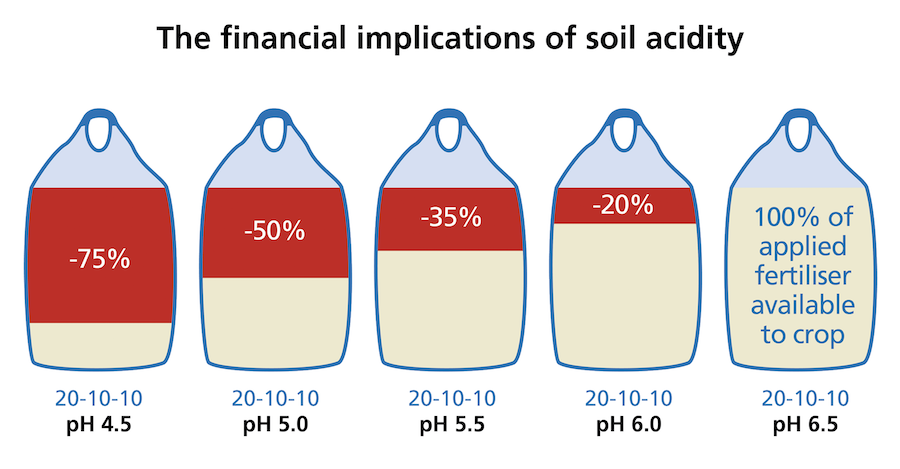Get the fundamentals right to give crops the best chance this spring
3rd February 2024
Whether you’ve been watching your winter sown crops suffer in the recent wet weather or you’re hanging out for spring planting, there’s one thing for sure – the healthier your soil, the better your crops will be able to withstand what the climate throws at them.

Agronomist David McLellan believes that unpredictable weather, whether excess rain or drought, can be better managed by improving soil structure where possible. “Soil that is well structured drains more freely in wet weather and retains its moisture better in dry weather,” he says.
“Soil resilience depends on its ability to withstand extremes and recover quickly once they are over. One of the key factors in maintaining soil health is managing pH. In acid soils, biological activity drops – preventing the breakdown of organic matter, tying up nutrients and reducing enzymatic activity. Soil conditioning with a granulated product like Omya Calciprill will correct soil pH quickly, making a huge difference to soil health.”
Omya Calciprill is a granulated soil conditioner which dissolves quickly in soil moisture, allowing its ultrafine particles to penetrate the soil profile and neutralise acidity efficiently. It also has a significant impact on soil structure, as Mr McLellan explains. “The calcium ions in Omya Calciprill promote humification and the formation of the clay-humic complex. Humus formed in the presence of calcium is made up of large molecules that are easy to flocculate and combine well with clay, in effect pushing the clay particles apart to provide better aeration, drainage and resistance to run off.”
Nutrient availability
There are of course other benefits to maintaining neutral pH – one of which is the effect on nutrient availability. Mr McLellan points out that, whilst nitrogen availability increases as pH increases, it’s also recognised that the crop will utilise nitrogen more efficiently at a neutral pH.
“Nutrient use efficiency is something growers should be thinking about well ahead of spring applications. We recommend soil testing with a UKAS accredited testing service to establish pH levels across your fields, as not every field or part of a field will have the same pH or the same nutrient levels. You can then apply granulated Omya Calciprill at 150–200kg per hectare for each pH point below the optimal. This will correct acidity within a few weeks as opposed to months with standard ag lime, which would require a tonne per hectare. It can then be maintained with much lower annual applications.”
PAAG data suggesting that acidity in the UK and Europe is very common, with more than 40% of arable lands below the recommended pH level. Macro-nutrients are 100% available to the plant at a soil pH of 6.5. Less than that and soil nitrogen stays in forms that plants find difficult to assimilate or, if transformed too late, are lost through leaching. In acid soils, phosphates are tied up, remaining inaccessible to the plant, and the potassium remains fixed to soil clays.

pH is measured on a logarithmic scale, so a pH of 5.5 is 10 times more acidic than a pH of 6.5. The drop of one pH point will reduce the availability of applied nitrogen and potassium by 23% and the available phosphorus by 52%. Mr McLellan likens this to throwing away 35% of a standard 20–10–10 fertiliser application.
“More than ever, growers need to make sure they are not wasting inputs. With crop yields under pressure from climate change, and fertiliser prices still recovering from the highs we saw in 2022 and 2023, nutrient use efficiency should be top of mind. Making sure pH is close to the optimal will not only improve soil health but also maximise the availability and efficient use of nutrients.”
Omya Calciprill can be applied alongside granulated fertilisers using standard spreader equipment at any time of year and is ideal for precision application. It will correct soil pH within weeks, as well as improving soil structure through better flocculation.
Mr McLellan concludes: “If you are in any doubt about your soil pH or nutrient status, get it tested now and correct any deficiencies with an application of Omya Calciprill. It only takes a fraction of the tonnes per hectare that would be required to do the same job if you were using standard ag lime every few years. Getting the fundamentals right could make the difference between being profitable or not this season.”
Read more arable articles here

